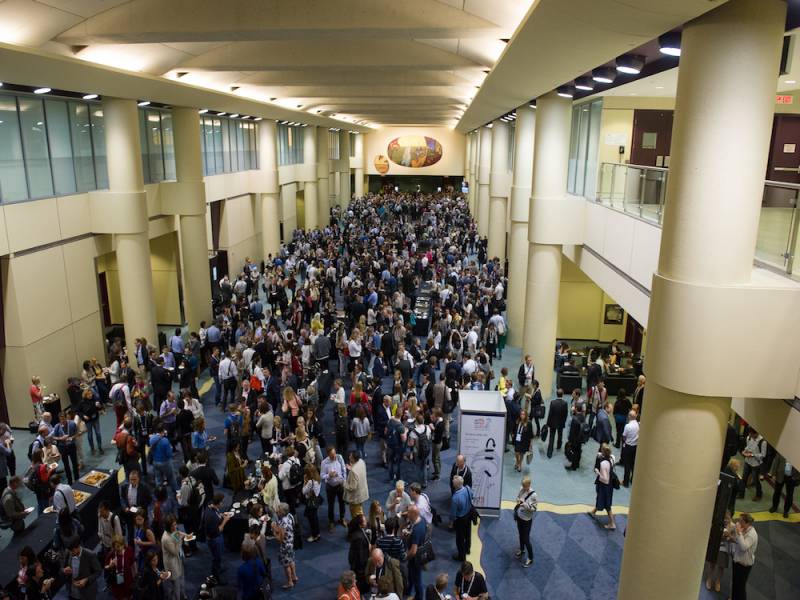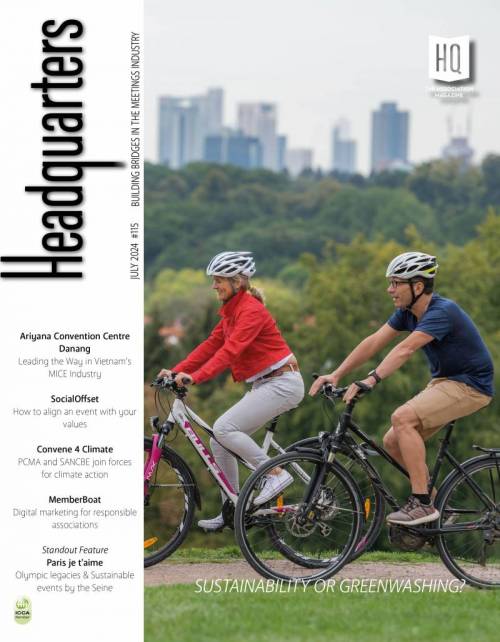HQ Profile: International Society on Thrombosis and Haemostasis

Lisa Astorga, Director of Meetings at the International Society on Thrombosis and Haemostasis, discusses the new strategic decision of holding an annual global congress. The new format aligns with trends in global medical meetings and will allow ISTH to be more relevant in all regions of the world.

Could you briefly introduce the International Society on Thrombosis and Haemostasis to our readers?
The International Society on Thrombosis and Haemostasis (ISTH) is a global not-for-profit membership organization advancing the understanding, prevention, diagnosis and treatment of thrombotic and bleeding disorders. The Society is dedicated to transformative scientific discoveries and clinical practices, the development of young professionals and the education of physicians, scientists and allied health professionals wherever they may live. At the ISTH, we initiate and promote education and outreach initiatives, research activities, scientific meetings, peer-reviewed publications, expert committees and the development of standards allowing a common language and approach to basic and clinical science all over the world.
We understand a strategic decision has just been made: to hold an annual global congress. Can you explain why, the reasoning behind the decision?
This decision was made due to the increasingly rapid advances in science as well as laboratory technology and treatment options, and the greater need for global collaboration, knowledge exchange and education. An annual congress will allow researchers, clinicians and allied health professionals in the bleeding and clotting field to remain on the cutting-edge of science and deliver the best patient care.
The new annual ISTH congresses will fully incorporate the highly valued ISTH Scientific and Standardization Committee (SSC) components, recognizing the value of the work of the SSC and its highly important applications and make it more accessible to the wider community.
The ISTH Council is confident that this decision highlights the ISTH’s commitment to transformative scientific discoveries and clinical practices, exchanging information to drive innovation and progress in the field. It will allow the Society to serve all regions of the world, providing better and more frequent access to more researchers, clinicians and allied health professionals in the field, regardless of where they live.
How will you decide where to take this congress to every year?
We have implemented a formal rotation to better serve our membership and attendees. The ISTH Council spent quite a bit of time discussing and reviewing data and evaluating rotation models that would provide for more balance between Europe and North America, while adding more events in the rest of the world (ROW).
The goal was to balance the approach that reflected the current membership while possibly seeding more growth in other areas of the world. Our final decision was to create a pattern that would cover the following regions of the world not only more regularly but more representative of the current membership and Congress attendance. This rotation is to be intentionally strategic through such a rotation, while enabling advanced planning in advance for bidding regions and scheduling of related societies.
What does it mean practically speaking? More in-house work, more outsourced activities for instance?
We have a Strategic Meeting Management Plan (SMMP) that was ISTH Council approved a few years ago that essentially brings most operations in-house. We have a transition plan over five years that addresses this in systematic processes. In the past the Society has worked with different PCOs and the leadership thought that by bringing the management of certain elements such as speaker management and communications, that there would be more consistency and continuity from meeting to meeting. Looking at the program format for example, this is now a discussion of the entire ISTH Council with input from the Local Organizing Committee (LOC) and not a standalone decision of the LOC which may have sometimes lead to the inconsistencies from meeting to meeting. We all agree that this better serves our members and attendees.
What are the trends, according to you, regarding medical meetings? Is the competition more and more fierce? How do you stand out?
Yes, competition is more and more fierce as the monies available to those attending meetings is decreasing. They really want to make sure they are selecting those meetings that are most relevant to them and provide cutting edge and applicable information that they can take back to their practice or lab and implement.
In general, what are the “trends” in the association world?
We are starting to see more of a move to Evidence Based Education and continual professional development (CPD) and performance improvement (PI) to measure the impact of education. We then are seeing a growing focus on adult learning outcomes – aligning session formats to the audience, and the type of information being presented, to a desired outcome or impact.
Other Articles
About Us
Supported by the Union of International Associations (UIA), the International Association of Professional Congress Organisers (IAPCO) and the Interel Group, the global public affairs and association management consultancy, Headquarters Magazines serve the needs of international associations organising worldwide congresses.














